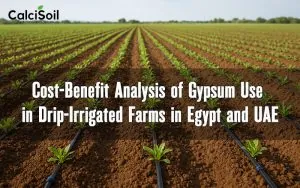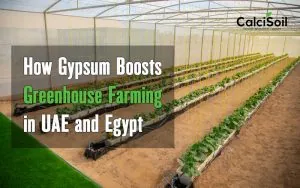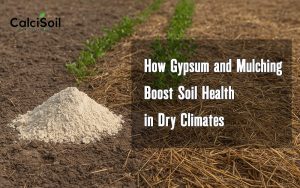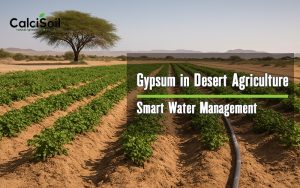
Understanding Agricultural Gypsum
In the world of modern agriculture, soil health has become one of the most important factors influencing long-term productivity. Among the many tools available to farmers, agricultural gypsum stands out as a proven amendment that enhances soil structure, supplies essential nutrients, and reduces nutrient runoff.
However, not all gypsum fertilizers are the same. Farmers today are often faced with a choice between mineral gypsum and FGD gypsum—two products that share a name but differ significantly in origin, composition, and implications for soil health.
What Is Mineral Gypsum?
Mineral gypsum is a naturally occurring material that is mined from ancient sedimentary deposits. For centuries, farmers have relied on this form of gypsum to improve soil tilth, enhance calcium and sulfur content, and alleviate compaction.
Its consistency, purity, and natural origin make it especially appealing to growers who prioritize organic or minimally processed inputs. Because mineral gypsum is formed over millennia, it typically contains a stable composition of calcium sulfate dihydrate with minimal contamination. As a result, it is widely accepted in sustainable and organic farming practices, especially where regulatory limits on synthetic inputs are strict.
What Is FGD Gypsum?
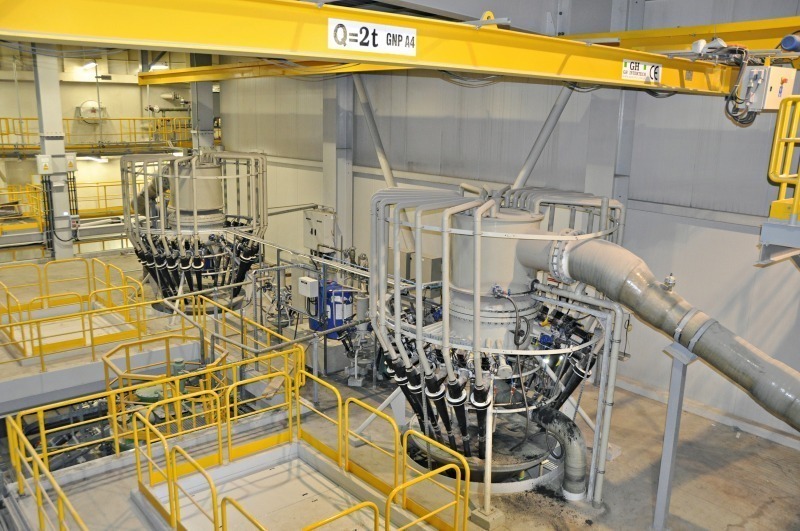
By contrast, FGD gypsum is an industrial byproduct produced during the flue gas desulfurization process in coal-fired power plants. As these facilities work to reduce air pollution by removing sulfur dioxide from emissions, a synthetic form of gypsum is created as a residue. This gypsum fertilizer has gained traction in agriculture due to its abundance and relatively low cost.
Because it reuses what would otherwise be a waste product, FGD gypsum also aligns with certain sustainability goals, particularly in regions where coal-fired energy remains a part of the energy mix. For farmers near these plants, the availability and affordability of FGD gypsum can make it an attractive option.
Key Differences Between Mineral and FGD Gypsum
While both mineral and FGD gypsum contain the same active ingredient—calcium sulfate dihydrate—their differences lie in purity and processing. Mineral gypsum is generally over 90% pure and free of heavy metals or industrial residues.
On the other hand, FGD gypsum can vary in quality depending on the scrubbing system used and the source of coal. Though most commercially available FGD gypsum is certified for agricultural use and safe for crops, trace elements like mercury, arsenic, or boron may be present in minute amounts.
Therefore, farmers considering FGD gypsum should always ensure it comes from a reputable supplier that complies with agricultural safety standards.
Environmental and Logistical Considerations
Another point of comparison is the environmental and logistical footprint. Mineral gypsum must be mined, processed, and transported, which can raise costs and energy use—particularly if local sources are unavailable. FGD gypsum, meanwhile, is often locally stockpiled near power plants, reducing transportation costs for nearby farms.
However, as energy production shifts away from coal in many countries, the future supply of FGD gypsum may become more limited. This dynamic introduces uncertainty for growers who rely heavily on it as a long-term soil amendment strategy.
Performance in the Field
From a practical farming perspective, both types of gypsum fertilizer perform similarly when it comes to improving soil structure, enhancing water infiltration, and reducing phosphorus runoff.
Numerous studies have shown that applying agricultural gypsum—regardless of its source—can significantly reduce nutrient leaching and improve root development in compacted soils. The calcium component flocculates clay particles, allowing better aeration and drainage, while the sulfur supports protein synthesis in crops like corn, soybeans, and alfalfa.
Choosing the Right Gypsum Fertilizer

Nevertheless, individual farm needs vary, and the choice between mineral and FGD gypsum should be guided by soil test results, regulatory considerations, and environmental priorities.
Some organic growers will strictly opt for mined gypsum to maintain certification, while conventional growers with budget constraints may lean toward FGD gypsum, especially if it is available locally.
The key is to base the decision on more than just cost—quality, consistency, and long-term soil health outcomes should always be part of the equation.
Long-Term Benefits and Sustainability
As demand for regenerative and conservation-focused agriculture grows, gypsum’s role in protecting water quality and improving soil function becomes even more valuable. Its ability to reduce phosphorus runoff, for example, makes it an important tool in preventing eutrophication of nearby streams and lakes.
Whether you use mineral gypsum or FGD gypsum, incorporating this amendment into your fertility program can bring both agronomic and environmental benefits.
Conclusion
In conclusion, both mineral and FGD gypsum offer effective pathways to enhance soil health, but they are not interchangeable in every context. Farmers should take time to understand the source, purity, and performance of their gypsum fertilizer options before applying them to their land. With the right approach, agricultural gypsum can help build more resilient soils, increase nutrient efficiency, and support a more sustainable farming future.

